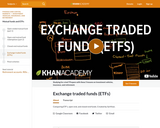
Comparing ETF's, open-end, and closed-end funds. Created by Sal Khan.
- Subject:
- Economics
- Social Science
- Material Type:
- Lesson
- Provider:
- Khan Academy
- Provider Set:
- Khan Academy
- Author:
- Sal Khan
- Date Added:
- 07/25/2012

Comparing ETF's, open-end, and closed-end funds. Created by Sal Khan.

Context Rich Problem using the concepts of excise tax incidence, elasticity of demand, and elasticity of supply. Students must determine which information is appropriate and which is extraneous to the problem.
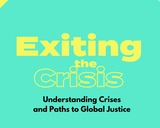
Climate breakdown, economic decline, global inequality and growing poverty - one crisis follows the next. To build a sustainable world where humans and nature can coexist in the long term, we need a socio-ecological transformation. The new L!NX-series Exiting the Crisis! - Understanding Crises and Paths to Global Justice offers an introduction to the topic of socio-ecological transformation, which analyzes the multiple crises and identifies ways for shaping alternatives.
A total of nine contributions deal with the following topics:
- food sovereignty
- mobility
- care work
- green energy
- green capitalism
- free trade
- development
- Organizing for a better future
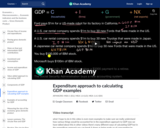
In this video, we explore how purchases of different things affect GDP, or why they wouldn't!

Expensing a truck leads to strange looking income statement. Created by Sal Khan.
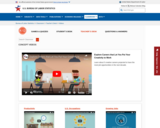
Learn about 5 creative careers projected to have the most job opportunities in the next decade.
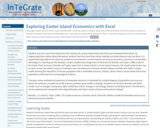
Students learn far more from doing than from viewing. By seeing relationships that they have developed themselves, by diagraming those relationships themselves, students learn far more than merely reading over what someone else has done. It is argued that especially for the dynamic problems encountered in environmental and resource economics, Excel has a comparative advantage as a learning aid. We develop a simple, flexible Excel assignment to illustrate the Brander and Taylor (1998) model of the Easter Island economy. Brander and Taylor argue that on Easter Island a crucial natural resource, the island's palm forest, was an open-access (res nullius) resource, leading to over harvesting and eventual societal collapse. Brander and Taylor's simple model showing the interaction of human population with a renewable resource, a forest, mimics what is known about the human population and forest from archaeological evidence.
The open access institutional protection of renewable resources is illustrated by a simple diagram of population and resource stock over centuries, a model much like ordinary predator-prey models in biology. Variations on the basic Brander and Taylor model, such as changes in propoerty rights institutions and/or changes in technology, based on published work in the literature, can be explored and compared to the original Brander and Taylor results of boom and eventual collapse.
Brander, J.A. and M.S. Taylor (1998). The simple economics of Easter Island: A Ricardo -- Malthus model of renewable resource use. American Economic Review
(Note: this resource was added to OER Commons as part of a batch upload of over 2,200 records. If you notice an issue with the quality of the metadata, please let us know by using the 'report' button and we will flag it for consideration.)
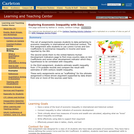
This set of assignments exposes students to data which can be used to analyze economic inequality in international and historical context. Then students are asked to generate a thesis-driven argument drawing supporting evidence from one or more of the data sources.

What did Mansa Musa care about more: god (religion) or gold (wealth)? Students will examine primary documents to delve into the motivations and priorities of Mansa Musa, the 14th-century emperor of the Mali Empire. It aims to explore whether his actions and decisions were driven primarily by religious beliefs or material wealth and power. Resource created by Emily David, Lincoln Public Schools, as part of the Nebraska ESUCC Social Studies Special Projects 2024 - Inquiry Design Model (IDM).

Students learn how to analyze a research question by identifying its component subtopics through a concept mapping exercise. They watch a short demonstration of the concept mapping process and apply it to the class topic. In small groups, students identify stakeholders related to one of the subtopics identified. They then locate sample reports or datasets created by stakeholders and record their findings on the concept map, ending with a class discussion of their findings.
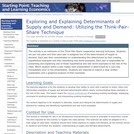
This is a two-part activity that implements an extension of the "think-pair-share" cooperative learning technique to study the determinants of supply and demand through hypothetical and real world examples.

This resource is a video abstract of a research paper created by Research Square on behalf of its authors. It provides a synopsis that's easy to understand, and can be used to introduce the topics it covers to students, researchers, and the general public. The video's transcript is also provided in full, with a portion provided below for preview:
"Recent years have seen the rapid global emergence of the "gig economy". Today’s technology has made it easier than ever to take on platform-enabled jobs on the side or even full-time, whether that’s renting out your home, delivering food, or giving others a lift. But that, researchers from Ireland say, could be problematic. In a new article published in the Human Resource Management Journal, they discuss “gig work” as another chapter in an all-too-familiar story: how technology has outpaced our capacity to fully consider its effects on humans. As the gig economy continues to grow, gig workers themselves could be growing more distant from the platforms that provide at least some portion of their livelihood. While the work may offer the flexibility many seek, there’s clear cause for concern over the well-being of workers, signaling an urgent need for dedicated research. Part of the problem lies in how gig work is discussed..."
The rest of the transcript, along with a link to the research itself, is available on the resource itself.
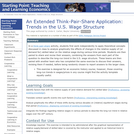
This activity uses a think-pair-share approach to helping students connect observations about disparate changes in the market for skilled/unskilled labor to long-run trends in wage inequality.
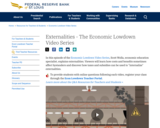
In this video (6 minutes long) students will learn about how externalities can affect supply, demand and ultimately equilibrium. This video will aid in review of standard EFP. 3 since students will see how a supply and demand graph can shift as a result of costs / benefits of externalities.
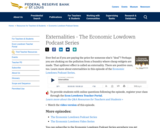
Ever feel as if you are paying the price for someone else's "deal"? Perhaps you are choking on the pollution from a foundry where cheap widgets are made. That spillover effect is called an externality. There are positive ones, too.

Trade benefits both buyers and sellers, but what happens when the transaction affects a third party? In this video, Professor Michael Munger of Duke University defines the term externality and explains different ways to solve the problem of externalities.
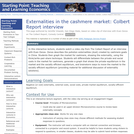
In this interactive lecture, students watch a video clip from The Colbert Report that addresses pollution externalities. Students graph the market and use the write-pair-share technique, then brainstorm ways to move the market to the socially efficient equilibrium.
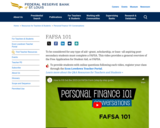
Take a stroll through each screen of the online FAFSA to see what information you'll need on hand to complete the application quickly and accurately.
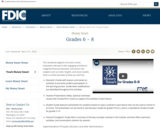
This standards-aligned curriculum series empowers educators with engaging activities to integrate financial education instruction into subjects such as math, English, and social studies. Here is a brief overview of what you will find:
Educator’s Guide with lessons and hands-on activities to promote student participation in the learning process. Grade-level modifications are identified throughout the activities.
Teacher Presentation Slides, optional overhead visuals that include fill-in charts to support the activities of each lesson.
Student Guide features worksheets for students based on topics covered in each lesson that can be used at school or at home. The worksheets can be found in the Educator Guide for grades Pre-K-2, and in a standalone Student Guide for grades 3-12.
Parents’/Caregivers’ Guide with a summary of the key concepts covered in the module, and that offers exercises, activities, and conversation-starters for parents.

Financial education resource collections suggested by Financial Education Public Private Partnership during their training sessions.